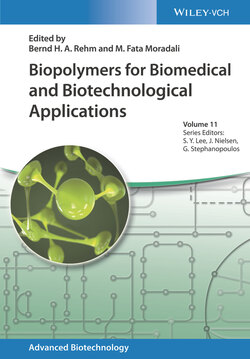Читать книгу Biopolymers for Biomedical and Biotechnological Applications - Группа авторов - Страница 27
2.3.3 Xanthan Gum
ОглавлениеXanthan gum is a heteropolysaccharide isolated from Xanthomonas campestris composed of a 1,4‐β‐D‐glucose backbone having a trisaccharide side chain (a glucuronic acid residue between two mannose residues) attached to alternate glucose residues [95,96]. It forms highly viscous aqueous solutions, even at low concentrations, with shear thinning behavior, and is stable in terms of temperature, salts, and a wide range of pH. It is the most widely accepted commercial bacterial polysaccharide due to its exceptional rheological properties [7,95,97]. Xanthan's major commercial producers comprise CP Kelco, Merck, Pfizer, Rhône‐Poulenc, Sanofi‐Elf, and Jungbunzlauer. It is used in several industries, such as foods, food packaging, personal care products, cosmetics, drug delivery systems, water treatments, and drilling fluids [12,98].
Recent trends on the use of xanthan‐based polysaccharide are focused on the use of formulations for various tissue engineering applications. Moreover, the shear thinning and gelling properties of xanthan are interesting in the area of 3D bioprinting of the tissue scaffolds and/or tissue models for future tissue engineering applications [12,98]. The use of xanthan in the form of luminescent composites, namely, nanocrystals, for biomedical applications shows good potential but is barely explored [98]. Xanthan‐based polymers have also been studied for solid polymeric electrolytes [99,100].
